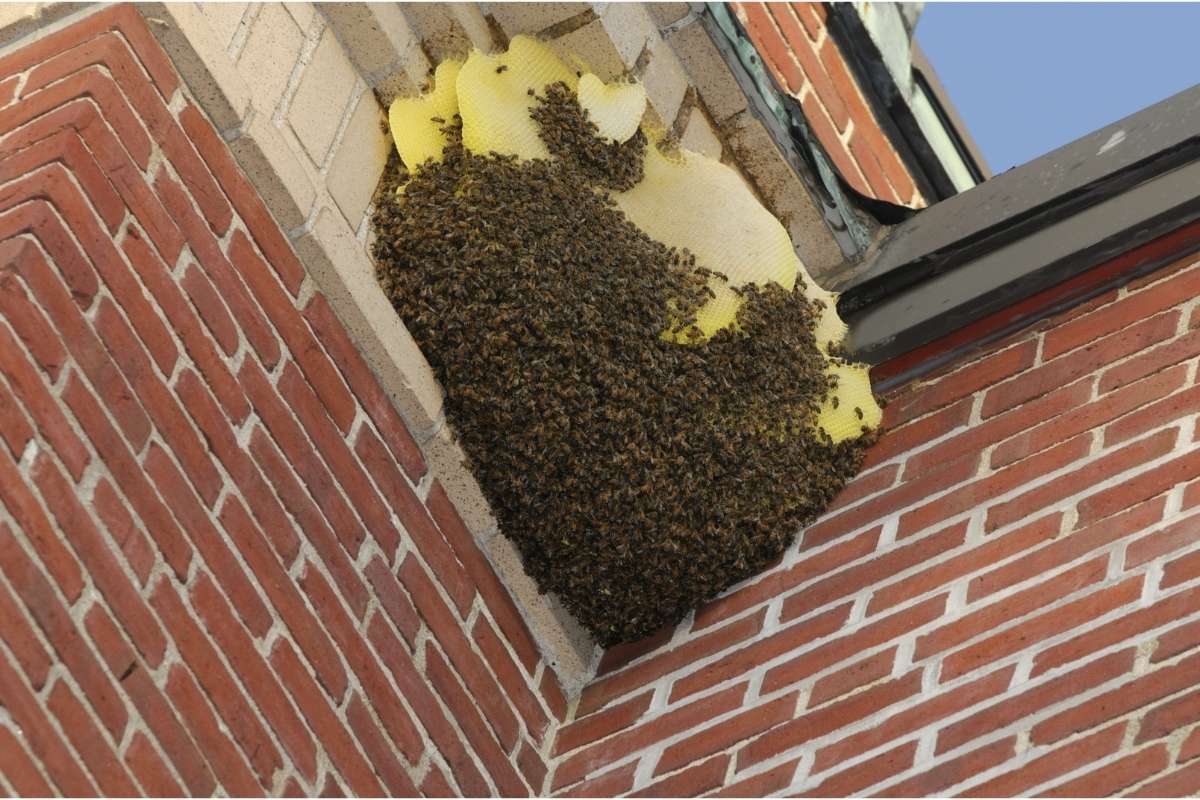How to Get Rid of Bees
Movies make bees seem cute and cuddly, but as anyone with a pest problem knows, insect infestations are far from fairy tales. Even the most caring conservationists consult pest professionals when swarms hit their windows and buzzing bullets fly past their ears. However, bees also play a vital role in pollinating the ecosystem. It’s important to learn about bee behaviour and assess all options before deciding how to get rid of bees.

Bees and the Environment
Without bees, the planet earth would have no plant growth, let alone honey. Around 90 per cent of all plants require cross-pollination, a process fuelled by bees and their pollen-spreading business. However, bee populations declined rapidly in recent years. Britain hosts over 270 types of bee, and a quarter of the species are currently endangered.
Which Type of Bee is Infesting Your Property?
Many of Britain’s various bee species nest and swarm around houses and gardens, causing potential hazards and distress. The most common types, Bumblebees and honeybees, form nests to lay their eggs and collect food.
Bumblebees enjoy nesting in the ground, in abandoned rodent runs and thickets of shrubbery. They may mistake garden decking or overgrown brickwork for an ideal home, causing a pest issue with their new human cohabitants. Bumblebee nests only grow to the size of an apple, and the bees aren’t especially aggressive. However, they will sting intruders near their nest entrance, causing hazards to humans and their pets.
Honeybees form larger hives in trees or hollows, so may nest in walls and attics. Unlike Bumblebees, who live and die on a yearly cycle, their queens can last several winters. Unfortunately for these busy honeybees, this poses a sustained threat to residents when nesting near living areas.
Masonry bees and miner bees form the third main type of British bee. These insects, also known as solitary bees, don’t form central hives but burrow into wood or brickwork in clusters. They vary wildly in species, with some infesting timber and mortar, and some, like the leafcutter bee, forming little cells in the holes from cut leaves. Like other bee infestations, masonry and miner bees can distort or swell property superficially but should not wreak any structural damage on a house.
When to Call a Bee Removal Expert
As with all pest problems, it is always best to act early to achieve the best outcome from a bee infestation. Bees often search for a place to hibernate in late autumn and create new hives in spring. If you notice large-scale bee activity near or in your home, such as nest construction, excessive bee noises, or sustained levels of bee flight, call a bee removal expert. These professionals can help you decide how to get rid of the bees if needs be.
Conservation experts and pest control professionals alike only advise intervention if the bees pose an immediate threat to life and wellbeing. If a large swarm of bees sting your children or pets, for example, the time has come for a bee removal expert.
How to Get Rid of Bees: Assessing Your Options
Pest control technicians understand the bee’s importance in the ecosystem and will assess whether or not the insects pose a serious threat. If they do, ethical bee removal experts will attempt to rehome the swarm in a safe place or with a local beekeeper. They conduct this process by sedating the bees and removing the queen into storage. The rest of the swarm follows the queen, and technicians can transport the bees to a new home.
If this proves impossible, pest control experts will safely eradicate the hive using insecticides. With sustainable low-impact chemicals, technicians treat then block the hive entrance. This quickly kills the bees while protecting any other wildlife from contamination. While poisonous to bees, this treatment will not harm mammals or residential property.
Hazards During Treatments
Bee treatment of any kind makes drone bees aggressive and hyper active. Residents should close doors and windows and keep pets and children away from the treatment area when the technicians arrive.
What To Do After Treatment
If a hive requires pesticide, the treatment should kill the majority of the bees in twenty-four hours. The problem should be completed within seven days, although cold or rainy weather can slow the treatment’s action. A bee’s nest in your property also increases the chances of another swarm arriving. To protect residents and other bees, homeowners should seal any cavities, cracks, or damaged brickwork. With a pest technician’s consultation, this should keep your home clean, safe, and future-proof.
